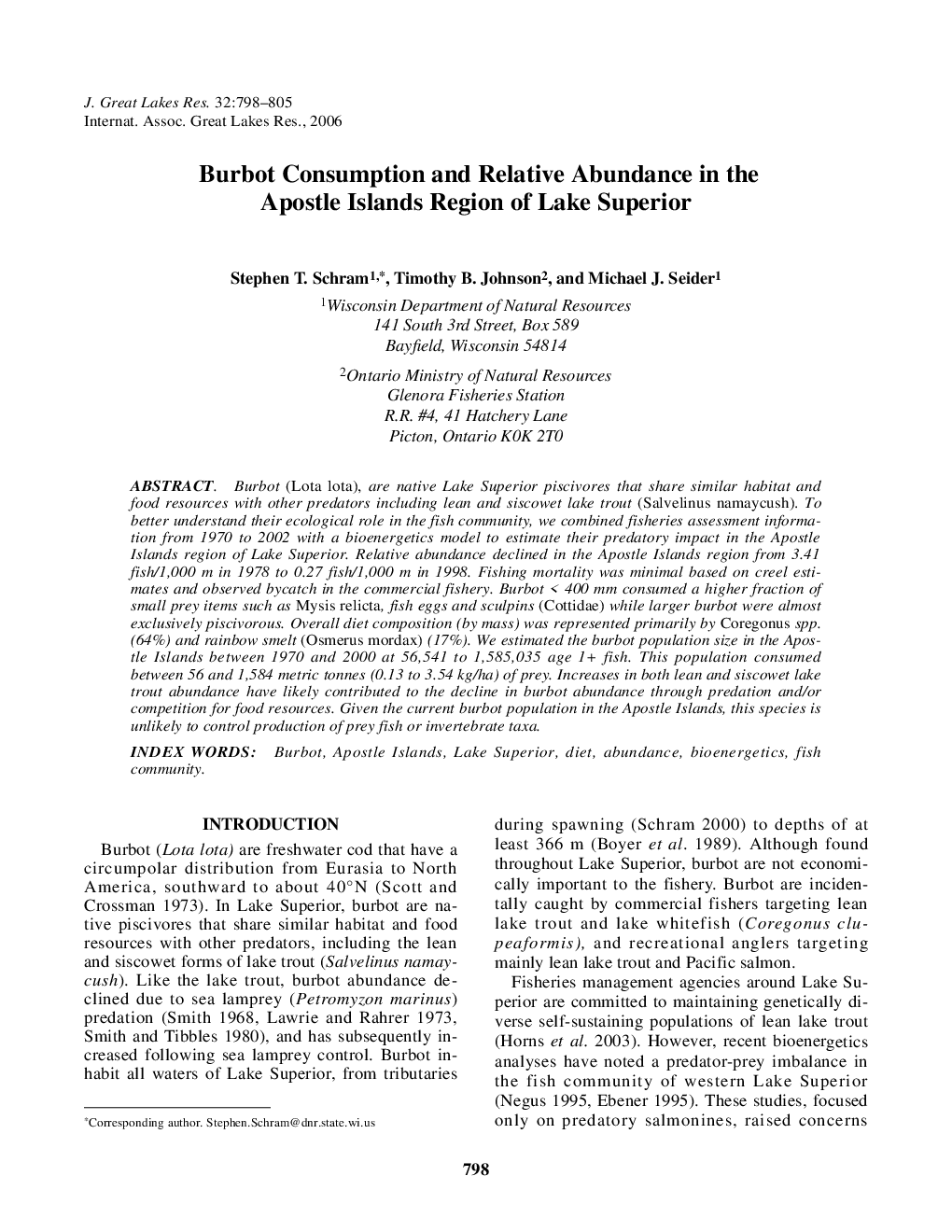| Article ID | Journal | Published Year | Pages | File Type |
|---|---|---|---|---|
| 4398774 | Journal of Great Lakes Research | 2006 | 8 Pages |
Abstract
Burbot (Lota lota), are native Lake Superior piscivores that share similar habitat and food resources with other predators including lean and siscowet lake trout (Salvelinus namaycush). To better understand their ecological role in the fish community, we combined fisheries assessment information from 1970 to 2002 with a bioenergetics model to estimate their predatory impact in the Apostle Islands region of Lake Superior. Relative abundance declined in the Apostle Islands region from 3.41 fish/1,000 m in 1978 to 0.27 fish/1,000 m in 1998. Fishing mortality was minimal based on creel estimates and observed bycatch in the commercial fishery. Burbot < 400 mm consumed a higher fraction of small prey items such as Mysis relicta, fish eggs and sculpins (Cottidae) while larger burbot were almost exclusively piscivorous. Overall diet composition (by mass) was represented primarily by Coregonus spp. (64%) and rainbow smelt (Osmerus mordax) (17%). We estimated the burbot population size in the Apostle Islands between 1970 and 2000 at 56,541 to 1,585,035 age 1+ fish. This population consumed between 56 and 1,584 metric tonnes (0.13 to 3.54 kg/ha) of prey. Increases in both lean and siscowet lake trout abundance have likely contributed to the decline in burbot abundance through predation and/or competition for food resources. Given the current burbot population in the Apostle Islands, this species is unlikely to control production of prey fish or invertebrate taxa.
Related Topics
Physical Sciences and Engineering
Earth and Planetary Sciences
Earth and Planetary Sciences (General)
Authors
Stephen T. Schram, Timothy B. Johnson, Michael J. Seider,
